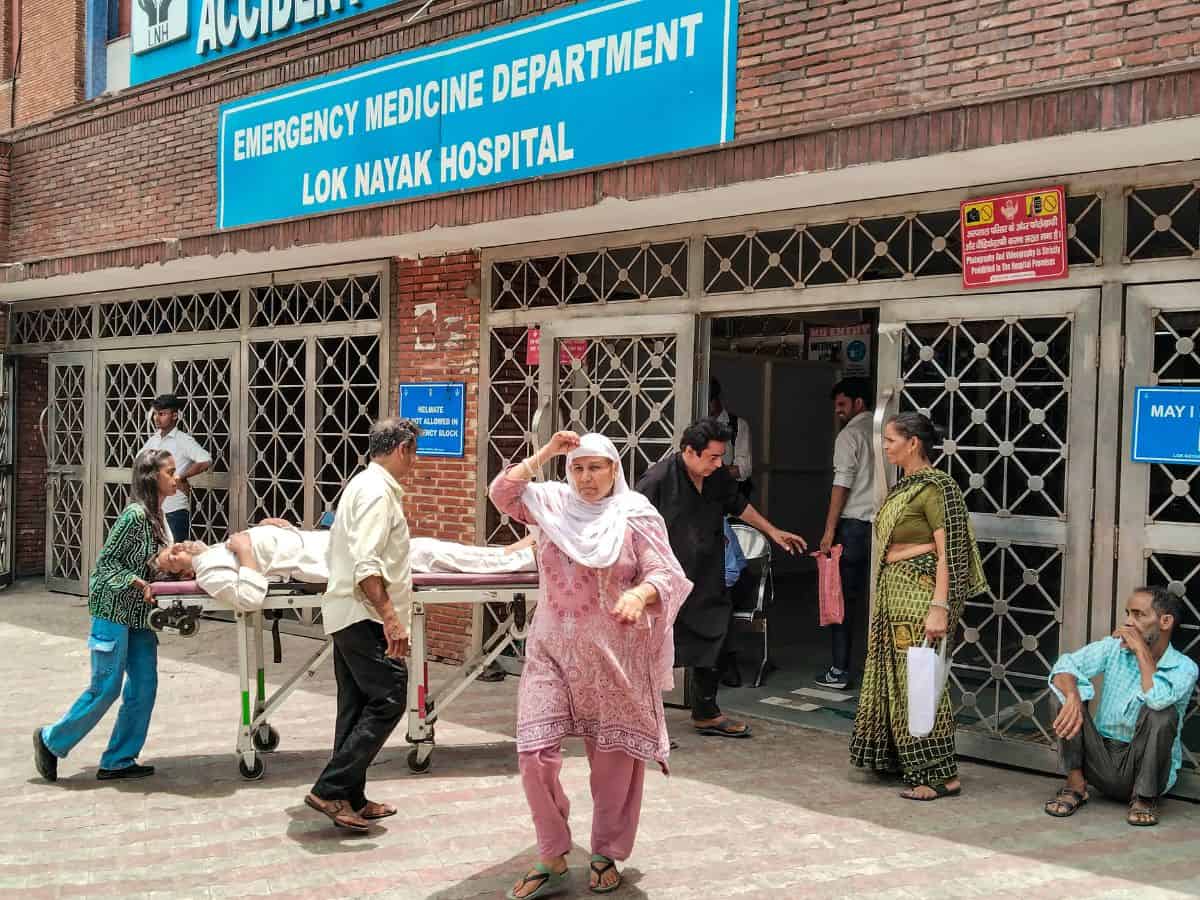
New Delhi: As many as five deaths were reported on Wednesday and 12 to 13 patients are on ventilator support as hospitals in Delhi are witnessing a spike in heatstroke cases and casualties, officials said on Wednesday.
“The victims did not have any co-morbidities. When such people come to the hospital, their core body temperature is recorded and, if it is found more than 105 degrees Fahrenheit and there is no other cause, they are declared as heatstroke patients. Those who succumb to heatstroke are declared as ‘suspected heatstroke’. There is a committee of the Delhi government that later confirms the deaths,” a senior hospital official said.
To ensure immediate cooling of the body, the hospital has set up a first-of-its-kind heatstroke unit.
“The unit has cooling technology and the patients are kept in baths filled with ice and water. When their body temperature goes below 102 degrees Fahrenheit, they are monitored. If they are stable, they are shifted into the ward. Otherwise, they are put on a ventilator. Most of the patients who are admitted are labourers,” the official added.
At the Safdarjung Hospital, there have been a total of 60 heatstroke cases, including 42 who have been admitted. The hospital has reported six casualties, including a 60-year-old woman and a 50-year-old man who died on Tuesday.
According to LNJP Hospital authorities, four patients have died due to suspected heatstroke in the last two days.
“There were two deaths on Tuesday due to suspected heatstroke and two casualties on Wednesday. There are 16 heatstroke patients admitted,” said a hospital official.
One of the victims, aged around 39, died during treatment on June 15. He was a motor mechanic who collapsed while working at his shop in Janakpuri. He was brought in with high-grade fever.
Speaking on heatstroke symptoms, a senior hospital official said patients sometimes collapse due to dehydration.
They also suffer from very high fever, which causes the body temperature to reach 106 to 107 degrees Fahrenheit, he added.
The Sir Ganga Ram Hospital in Delhi is witnessing 30 to 35 heatstroke cases at its outpatient department (OPD) daily.
“At the OPD, medical facilities are reporting between 30 to 35 cases weekly related to heat-induced ailments. These include conditions such as heat cramp and heat exhaustion,” said Dr Atul Kakar, chairperson of the hospital’s Department of Internal Medicine.
“This surge in cases highlights the importance of public awareness about heat safety measures, including staying hydrated, seeking shade during peak sun hours, and understanding the signs of heat-related distress. Healthcare providers are on alert, ensuring prompt and effective treatment to manage and mitigate the impact of rising temperatures on public health,” he added.
The heat wave is causing an increase in the prevalence of lupus that affects the skin, joints and kidneys, among other organs. People who have lupus frequently experience flare-ups and increased symptoms as the temperature rises.
There are six to 10 cases of lupus that were detected due to the prolonged heat wave. SLE (systemic lupus erythematosus) or lupus is an autoimmune disease in which the body’s own system is targeted, leading to multiple-organ affection and damage. It primarily affects women and that too in their child-bearing age between 15 and 45, said Dr Lalit Duggal, a senior consultant of rheumatology and clinical immunology at Sir Ganga Ram Hospital.
Lupus is a highly complex disease, the cause of which is unknown. Several environmental factors can be possible triggers on an underlying genetic background, he said.
Delhi experienced the warmest night in 12 years with the minimum temperature on Wednesday settling at 35.2 degrees Celsius, eight notches above normal, the weather office said.
The maximum day temperature was recorded at 43.6 degrees Celsius, 4.8 notches above the season’s average.
